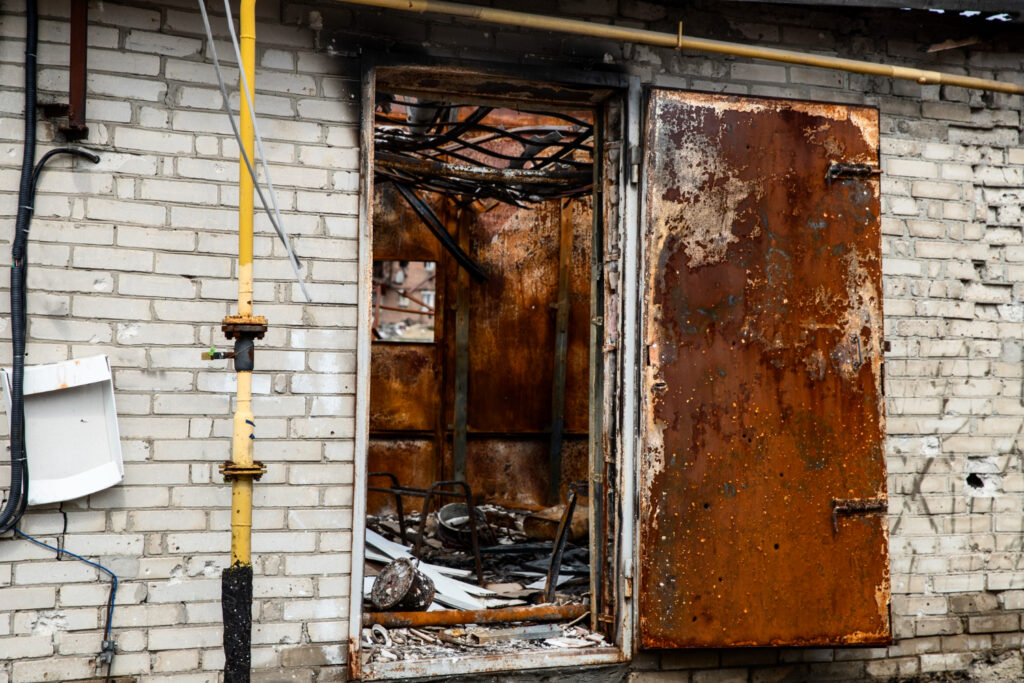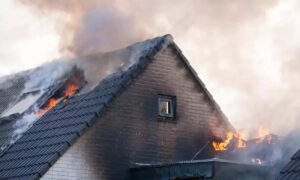Blogs
The Complete Process of Fire Damage Restoration Explained

Fire damage can be overwhelming for homeowners, leaving behind a trail of destruction both visible and hidden. At its core, fire damage restoration is about reversing the impact of a fire and making a house feel like home again. This process involves a series of steps that address not just the apparent problems but also the hidden threats that could affect the home’s safety and livability. Understanding these steps can provide clarity and peace of mind during an otherwise stressful time.
Acting quickly when fire damage occurs is crucial to minimize further harm. Initiating professional fire damage restoration promptly can greatly aid in salvaging personal belongings and restoring structural integrity. It’s not merely about fixing what’s been damaged; it’s about creating a safe and comfortable environment once more. With seasoned professionals at your service, the task of restoration becomes significantly more manageable and efficient.
Initial Assessment and Safety Measures
The moment after a fire is a whirlwind of emotions and decisions. As you take stock of what’s happened, the first priority should be to secure your property and ensure everyone’s safety. Here’s where professionals step in with a structured plan.
1. Conducting a Thorough Assessment:
– Upon arrival, restoration experts perform an exhaustive assessment. They survey the extent of the damage, checking both the obvious and subtle areas that might have been affected.
2. Safety Inspections:
– The structure will be evaluated for safety risks—damaged wires, weakened support beams, and potential toxic residues are some of the concerns addressed during this phase.
3. Securing the Property:
– This involves boarding up windows, reinforcing doors, and covering gaps in the roof to prevent further damage from environmental elements and deter unauthorized access.
4. Documentation for Insurance:
– Professionals also document the damage extensively. This step is essential for insurance claims, ensuring that nothing is overlooked when filing for financial recovery.
Taking these initial steps not only helps stabilize the property and prevent further deterioration, it also sets the groundwork for a smooth and organized restoration process. By addressing immediate safety concerns, homeowners can focus on the emotional journey of recovery knowing their property is in knowledgeable hands.
Removal of Debris and Soot
Once the initial safety measures are in place, attention turns to clearing out debris and tackling the pervasive issue of soot. This step is fundamental in returning your home to its pre-fire condition and ensuring it is safe for habitation.
– Debris Removal:
– Clearing the site of debris quickly removes hazards and allows for a clearer picture of the work ahead. This includes disposing of charred furniture, burnt materials, and any items beyond repair.
– Soot Cleanup Techniques:
– Soot, which can settle everywhere after a fire, is managed using specialized tools and cleaning agents. High-efficiency vacuums and air scrubbers are often employed to extract it from surfaces and the air.
– Addressing Lingering Odors:
– Unpleasant smoke odors are tackled with deodorizing treatments. These treatments neutralize lingering smells that could remind residents of the fire.
– Storing Salvaged Contents:
– Whenever a fire happens, all salvaged contents must be carefully moved out and placed into climate-controlled storage. This ensures that items not directly damaged by fire are protected from further harm due to lingering smoke, moisture, or temperature changes during the restoration process.
The thorough removal of debris and soot not only facilitates a cleaner, safer environment but also significantly reduces any lingering odors associated with smoke damage. Each action taken during this stage targets specific problems, making the broader restoration efforts more effective.
Cleaning and Sanitizing
Once debris and soot have been dealt with, the focus shifts to cleaning and sanitizing the affected areas. This is key for ensuring a sound living environment free from health hazards and unpleasant reminders of the fire. The cleaning process involves a detailed approach using specialized techniques and equipment.
First, professionals clean surfaces to remove any lingering soot and smoke particles. High-powered vacuums, along with HEPA filters, are often used to capture even the smallest particles floating in the air. This step ensures that the air quality improves significantly as you start reclaiming your space.
Sanitizing takes the restoration process a step further by addressing any bacteria or toxins introduced by the fire or water used in firefighting. To achieve this, experts apply disinfectants and sanitizers across the affected areas, targeting both visible and hidden spots.
The use of specialized equipment such as foggers and ozone machines helps neutralize smells and ensures that spaces are not just clean, but also safe to occupy. These treatments help eliminate the odors that settle deep into fabrics and structures, making a big difference in returning a home’s fresh atmosphere.
Restoration and Repairs
When cleaning is complete, the restoration can truly begin. This stage focuses on repairing structural elements and restoring integrity to your home. It involves thoughtful planning and skilled execution to bring damaged areas back to their former state.
1. Structural Repairs:
– This includes fixing roofs, walls, and floors. Attention is given to any specific areas that need reinforcing or rebuilding after experiencing fire’s intense heat and smoke.
2. Water Damage Repairs:
– Addressing water damage is crucial, especially where firefighting efforts could have caused saturation. This involves drying out areas thoroughly and repairing any water-damaged sections to prevent mold growth.
3. Cosmetic Restoration:
– Paintwork, flooring finishes, and replacing damaged installations fall under this category, focusing on restoring appearances and functionalities alike.
Each element of restoration and repair requires careful attention to detail. The goal is to restore the home not just to a livable state, but to a level where it offers the same warmth and safety it did before the fire. This part of the process can be a transformative journey, as homeowners see their house evolve from damaged to renewed.
Bringing Life Back to Normal
Rebuilding a life after a fire takes more than just structural repairs. The final stages of restoration focus on those personal touches that make a house a home.
After the major projects wrap up, the last steps include reinstalling furniture, personal items, and family heirlooms. You start arranging spaces to fit your lifestyle once more. This stage fosters a sense of renewal and beginnings, marking a significant step toward emotional recovery.
Fire damage restoration is not just about addressing the physical aftermath but also healing from the experience. The process acknowledges both practical needs and emotional well-being. Being informed and prepared for the steps involved in restoration can ease the journey, paving the way for a future that’s both safe and filled with new memories.
A fire can leave behind overwhelming damage, but you don’t have to go through the recovery alone. Let the experienced team at Intensa Dry guide you through every stage of the restoration process. From detailed assessments to the finishing touches, we’re here to help you feel at home again. Learn how our team can support you with expert fire damage restoration services designed to bring safety and comfort back to your space.

